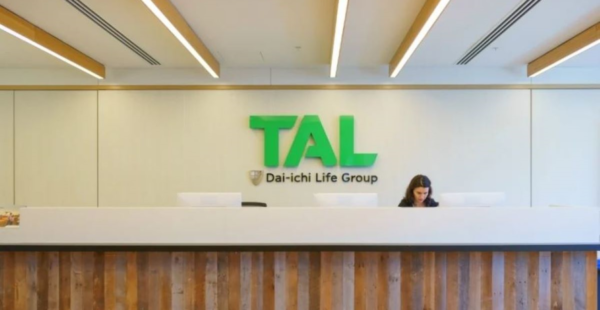Personal Medical Attendant Reports: Overcoming life insurers’ biggest administrative headache

Doctors seldom – if ever – become doctors to shuffle papers. Yet every day, clinicians are inundated with administrative tasks that rob them of precious time with their patients.
Australian GPs spend an estimated seven hours, nearly a full workday each week, on non-face-to-face administrative duties.
The Royal Australian College of General Practitioners’ latest Health of the Nation report reveals that more than two-thirds (70%) of GPs are dissatisfied with this growing admin burden.
Personal Medical Attendant Reports, or PMARs, are a particular bane for work weary GPs. These forms, however, are a necessary part of the life insurance onboarding process, used by underwriters to determine a fair premium and coverage for applicants based on their current health profile.
PMARs are designed to provide underwriters with a full picture of an applicant’s current medical state, referencing past diagnoses, current treatments, and relevant specialist reports, including blood tests.
Unsurprisingly, given they can be exhaustive, unwieldy documents, many GPs relegate PMARs to the bottom of their to-do lists.
Bringing PMARs into digital age
The PMAR process has remained stubbornly paper-based, with pre-formatted PDF forms the furthest extent of its evolution. These static forms give clinicians free rein to decide how much, or indeed how little, detail to include.
Such inconsistency only serves to exacerbate delays. On average, underwriters wait nearly a month to receive a completed PMAR, with some insurers reportedly waiting up to six months for these reports. Every day a PMAR stalls, a prospective customer remains uninsured.
Stephen Clarkson, founder and CEO of EQ Pathology and a practising adviser himself, knows the frustrations on both ends of this still largely analogue process – from GP offices juggling requests to insurers interpreting unstructured data, and all the wasteful rigmarole in-between handled by advisers on behalf of their clients.
“[The PMAR] has, up to now, essentially been a free-for-all, where the doctor could write in whatever they wanted, with whoever’s assessing it needing to interpret what they’ve written,” Clarkson explains.
Yet this lack of structure was hardly the fault of time-stressed GPs. “In terms of the information insurers requested through the PMAR, it was all very indiscriminate,” Clarkson says.
Born from these challenges, EQ Pathology developed HealthIQ, considered the world’s first fully digital, end-to-end, and automation-ready medical report system for life insurers.
“We’ve built up a tech stack, through Salesforce, that allows us to create medical report questionnaires in an online format that, rather than wasting their time with generic questions about unrelated medical conditions, only asks the questions that an insurer needs to make a decision,” Clarkson says.
Data is collected in a structured format, with extensive use of drop-down menus and pre-filled lists, improving accuracy as well as ensuring only necessary patient information is collected to fulfil a risk assessment.
“We’ve moved from handwritten PDFs – often scanned and faxed back to advisers – to a streamlined digital process that insurers can customise for precise data collection, receiving only the information they need [to deliver a policy outcome],” Clarkson says.
The ability for insurers to fully customise and update PMARs to their needs – easily including or excluding specific medical conditions – was a top-order priority for EQ’s developers.
“When we built our PMARs platform, it was based on how we think an insurer would want to use it,” Clarkson says.
Digitisation is, for the first time in life insurance underwriting, enabling straight-through processing with near real-time decisions, resulting in a drastic reduction in approval times for policy applicants.
“It’s about minimising that friction as much as possible and utilising our deep understanding of the end-to-end underwriting process to automate as much as possible,” Clarkson says.
“Now, our PMAR responses come back faster, better and more accurate.”
Resolving the ‘biggest pain point in our industry’
As an adviser, Clarkson has seen too many customers abandon life insurance applications due to excessive delays in the PMAR process.
For this reason, he regards manual PMARs “the biggest bottleneck in the underwriting process”.
Acenda (formerly MLC Life) also recognised this as a critical roadblock to meeting customers’ needs in the digital age.
As one of the biggest underwriters in Australia, Acenda quickly recognised EQ’s transformative potential, becoming the insurtech’s first industry collaborator. Acenda is now proudly the inaugural adopter of EQ’s ground-breaking digital PMARs solution.
“For us, the [old] PMARs process certainly was the biggest reason for an application to be delayed,” says Amber Brockie, Acenda’s Chief Underwriter, noting that nearly half (42%) of its applicants require some form of medical evidence.
“This is a big cohort of our customers. The medical reporting process was a real standout focus for us if we wanted to move the dial and improve overall customer experience,” she said.
It was officially launched in June and, while it’s still early, we are already seeing receipt times cut in half.
For Brockie, a fully digitalised PMAR “resolves one of the biggest pain points” in the life sector – a process which insurers have previously had limited means to change.
Reduced admin burden for doctors, faster conversions for advisers, and lower costs for insurers are clear benefits. But, for Brockie, the biggest winners are customers.
“Onboarding touches 100% of customers. Making it as frictionless as possible is core to delivering the best customer experience,” she says.
For its efforts, Acenda was recently awarded ALUCA’s top gong for cross-sector collaboration – a recognition of the transformative impact of this technology on the entire life industry.
The digitalisation of PMARs is also first crucial step in Acenda’s top-to-tail overhaul of its underwriting process.
Both EQ and Acenda see significant room for further innovation in digital PMARs – from integrating medical reporting directly into GPs’ practice management systems, making it even easier for doctors to attend to and complete reports, to insurers using artificial intelligence to streamline underwriting and better pinpoint the data needed to make accurate policy decisions.
PMARs have long been the biggest choke point in life insurers’ underwriting process. Digitalisation has more than simply replaced paper for bits and bytes; it entirely transforms the data-gathering and risk assessment process. For clinicians, this takes hours of paperwork off their hands to give back to their patients. For prospective policyholders, it takes away months of uncertainty, providing peace of mind in just days.
Content Partnership sponsored by Acenda












The insurance companies for many years failed to take into consideration how busy most GPs are and offered peanuts in dollar terms to get a report.
Even as far back as 5 years ago, the insurance companies were offering between $80-$95 for a report.
The real time cost for a GP was probably around $200-$250.
Is it little wonder these reports went to the bottom of the “To do pile”.